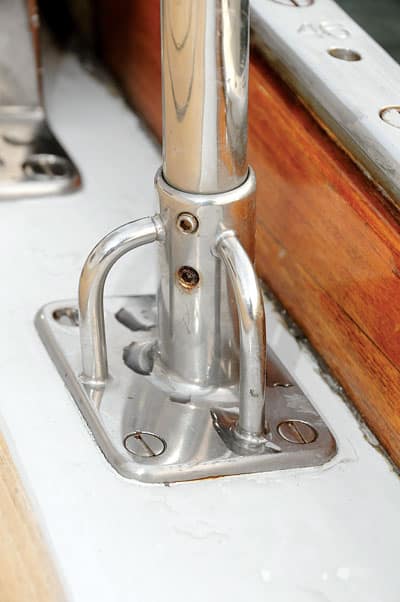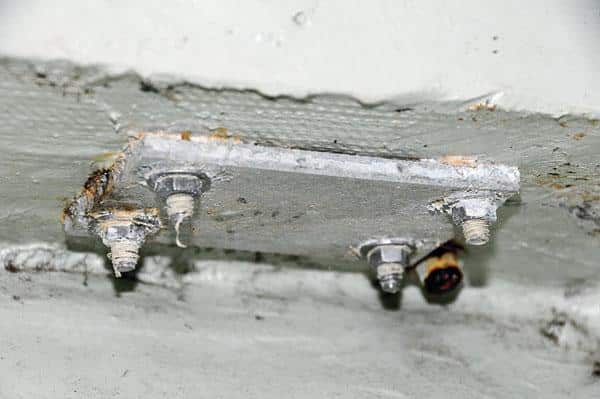
Monthly Maintenance April Main
I was taught long ago that lifelines should be thought of simply as the perimeter of a sailboat’s deck, a line you shouldn’t cross lest you go swimming. How many of us, however, have leaned on, grabbed, or hung over a lifeline? I’ll confess that each time I do so, I silently scold myself because over the years, I’ve seen countless failures of stanchions and lifelines. Here are some tips on trouble to look for when inspecting your stanchions, along with some ways to avoid it.
Check the Fasteners
If the stanchion bases on your boat move, if the deck around them is cracked or depressed, if they leak, or if signs of rust staining are present, then a refit is in order. Common failure points for stanchions are the fasteners that secure their bases to the deck or toerail. These through-bolts are subject to cyclical loading that leads to failures in the stanchion base’s bedding, which in turn allows water to migrate into the holes through which these bolts pass. If the water is retained here, as it often is by under-deck bedding, it sets up an ideal environment for crevice corrosion. If your stanchions haven’t been removed and serviced in the last seven years or so, consider removing, inspecting, and rebedding them. Go to www.cruisingworld.com/1204install for tips on proper hardware installation.
How’s the Deck Look?
Penetrations made in cored fiberglass decks (and virtually all decks are cored) must be properly sealed, and wherever a stanchion is through-bolted, the fiberglass must be solid or else cored with an ultrahigh-density crush-resistant and water-resistant material designed for hardware installations. Otherwise, core material must be removed and replaced with thickened epoxy slurry, a process frequently referred to as reefing and backfilling. See www.cruisingworld.com/1204backfill for tips on this job.
Use a Proper Backing Plate
Below each stanchion, use a backing block or oversized washers to distribute over a wide area the load placed on a stanchion. Ideally, backing blocks should be made of such composite material as GPO-3 or G10, as both are corrosion proof, stiff, and easily cut and shaped. Avoid aluminum as a backing plate material because it’s prone to galvanic corrosion when it comes in contact with stainless steel, especially in a saltwater environment.

_Replace old or corroded backing plates with modern composite ones.
_
_
_
Steve D’Antonio offers services for boat owners and buyers through Steve D’Antonio Marine Consulting.








